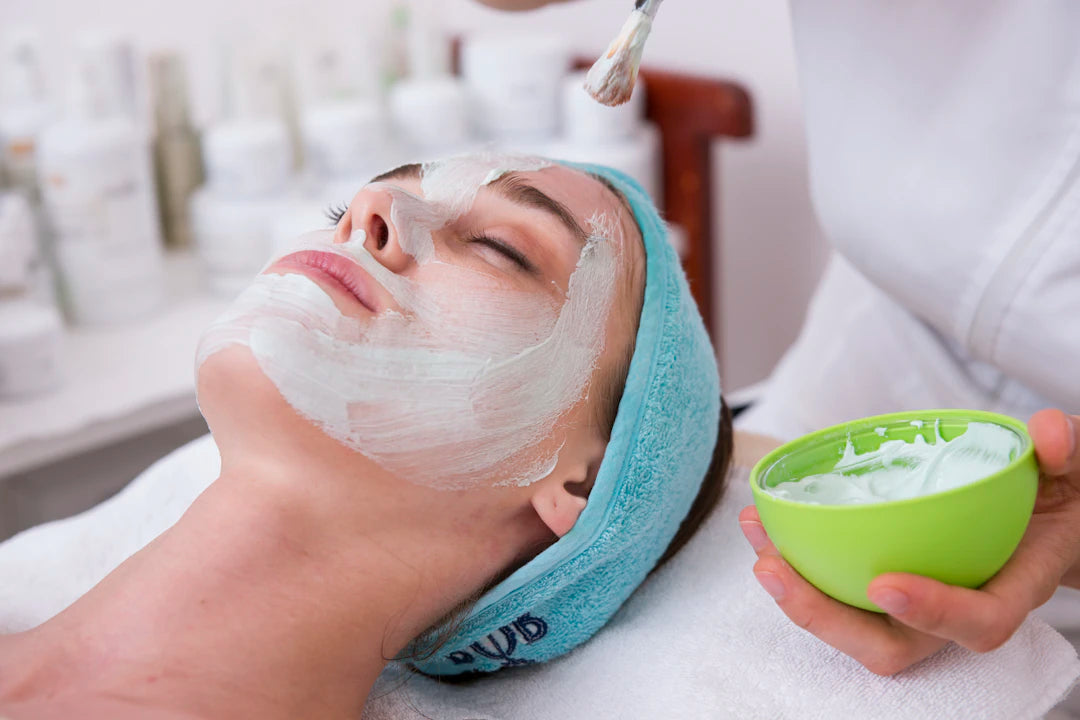Exfoliation: Why You Should Do It & How Often?

Overview
Exfoliation is essential for maintaining healthy skin by removing dead skin cells and improving texture and tone. There are two main methods: physical exfoliation (using scrubs and tools) and chemical exfoliation (using acids). Benefits include enhanced product absorption, unclogged pores, reduced fine lines, and improved skin tone. Frequency of exfoliation varies by skin type, with recommendations ranging from once a week for sensitive skin to three times a week for oily skin. Best practices include patch testing, moisturizing afterward, and using sunscreen. Common myths about exfoliation, such as it being only for the face or causing acne, are debunked. Embrace exfoliation for a radiant glow!
Frequently Asked Questions
1. What is exfoliation?
2. How often should I exfoliate my skin?
3. What are the benefits of exfoliation?
4. What are the different methods of exfoliation?
5. What should I do after exfoliating?
Exfoliation is a pivotal step in any skincare routine. It helps to reveal fresh, glowing skin underneath the layer of dead cells that accumulate on the surface. Not only does exfoliation enhance the overall texture and tone of your skin, but it also plays a crucial role in processes like microdermabrasion and skin tightening. In this article, we’ll explore the importance of exfoliation, how often you should do it, and the best practices to ensure you achieve optimal results.
Understanding Exfoliation
Exfoliation is the act of removing dead skin cells from the surface of the skin. This can be done through physical methods or chemical processes, depending on your preference and skin type. Let’s delve deeper into each method.
Physical Exfoliation
Physical exfoliation involves the use of abrasive materials or tools to slough away dead skin. Common examples of this method include:
- Exfoliating scrubs that contain granules.
- Brushes specifically designed for facial exfoliation.
- Microdermabrasion devices that create a gentle abrasion on the skin’s surface.
While physical exfoliation can provide instant smoothness, it's vital to choose products that are effective yet gentle. Excessive or harsh scrubbing can lead to irritation and damage, so moderation is key.
Chemical Exfoliation
Chemical exfoliation utilizes active ingredients such as alpha hydroxy acids (AHAs) and beta hydroxy acids (BHAs) to dissolve dead skin cells. This method can provide deeper results without the need for scrubbing. Popular substances include:
- Glycolic Acid
- Lactic Acid
- Salicylic Acid
Chemical exfoliators are especially effective for unclogging pores and treating issues like acne and hyperpigmentation. They can also contribute to skin tightening qualities by promoting collagen production in the skin.
Benefits of Exfoliation
The benefits of consistent exfoliation extend beyond just improved texture. Here are some key reasons to incorporate this regimen into your skincare routine:
1. Enhanced Product Absorption
When the top layer of dead skin is removed, your skin becomes more receptive to the products you apply afterward. This means serums, moisturizers, and treatments can penetrate more deeply and deliver superior results.
2. Unclogged Pores
Regular exfoliation helps to prevent the build-up of oils, dirt, and dead skin cells in your pores. This can significantly reduce the risk of breakouts and blackheads, especially for those with oily or acne-prone skin.
3. Diminished Appearance of Fine Lines
By stimulating cell turnover, exfoliation aids in minimizing the appearance of fine lines and wrinkles. This rejuvenates the skin, giving it a more youthful appearance over time.
4. Improved Skin Tone
If you struggle with uneven skin tone, hyperpigmentation, or dullness, exfoliation can help. By removing dead skin, it encourages the growth of new, evenly pigmented skin cells, leading to a brighter complexion.
How Often Should You Exfoliate?
The frequency of exfoliation largely depends on your skin type and the method you choose. Here is a comprehensive guide:
For Sensitive Skin
If you have sensitive skin, it’s crucial to be cautious with exfoliation. Opt for gentle, chemical exfoliants, and limit exfoliation to once a week to prevent irritation.
For Normal to Combination Skin
Those with normal or combination skin can typically engage in exfoliation twice a week. This balance allows for the removal of dead skin without over-stripping essential oils.
For Oily or Acne-Prone Skin
Exfoliating three times a week can be beneficial for individuals with oily or acne-prone skin. This helps to control excess oil and prevent clogged pores, especially when utilizing products with salicylic acid.
For Dull or Mature Skin
Mature skin often benefits from more frequent exfoliation about two to three times a week to maintain radiance and support the skin’s natural renewal cycle.
Best Practices for Successful Exfoliation
To ensure you're getting the most out of your exfoliation routine while avoiding potential pitfalls, keep these best practices in mind:
1. Patch Test New Products
Before fully integrating a new exfoliant into your routine, perform a patch test. Apply the product to a small area of your skin to check for any unwanted reactions.
2. Listen to Your Skin
Your skin communicates its needs. If you notice redness, irritation, or sensitivity, scale back your exfoliation frequency. Always prioritize the health of your skin over strict adherence to routine.
3. Follow Up with Hydration
After exfoliation, your skin can be more vulnerable. Be sure to follow up with a good moisturizer to lock in hydration and support the skin barrier.
4. Wear Sunscreen
Post-exfoliation, your skin is more susceptible to UV damage. Always apply a broad-spectrum sunscreen during the day to protect your fresh skin and maintain its health.
Exfoliation Myths Debunked
With so much information available, it’s easy to be misled. Let's debunk some common myths surrounding exfoliation.
Myth 1: Exfoliation is Only for the Face
While facial exfoliation is crucial, the rest of your body deserves it too! Regularly exfoliating your body can promote smoother skin and a more even tone.
Myth 2: Exfoliation Causes More Acne
This misconception stems from improper exfoliation techniques. When done correctly, exfoliation can actually prevent clogged pores, thus reducing acne breakouts.
Myth 3: Everyone Should Exfoliate Daily
Over-exfoliation can be detrimental. It’s crucial to tailor your exfoliation routine based on your skin type, not a one-size-fits-all approach.
Embrace the Glow
Incorporating exfoliation into your skincare regimen can offer transformative benefits, from enhanced texture and tone to the rejuvenation of your skin. By understanding the methods of exfoliation, its numerous benefits, and how often to do it, you can embrace a radiant glow. Remember, skincare isn’t just about products; it's about knowing what your skin needs and how to nourish it effectively. Happy exfoliating!
Linked Product
Microdermabrasion
Microdermabrasion is designed to provide effective exfoliation by utilizing bamboo beads to remove dead skin cells. Its gentle formula helps promote a smoother complexion, making it a suitable addition to your skincare routine. Regular use can enhance skin texture and prepare your skin for better absorption of other products.
View Product

